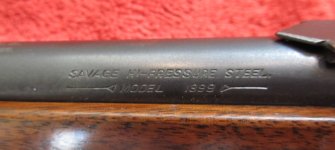bracebeemer
Member
I’m pulling guns out of my safe to share them with you and give them a little social distancing. This rifle is a Savage 99 H. It is a high polish pre war 20” barrel take down from circa 1915 in .303 Savage cal. It obviously has led a sheltered life but what appealed to me most was the beautiful buttstock. The stock does number to the gun and I’m sure the original owner wanted to pay a few dollars more for an upgrade to the wood. I love the early high polish and case hardened Savage 99’s. The .303 Savage was in the 30-30 class of cartridges. Bill
Attachments
-
 F9C22610-45B2-43B2-B6A7-16B2A8B37E77.jpg32.9 KB · Views: 238
F9C22610-45B2-43B2-B6A7-16B2A8B37E77.jpg32.9 KB · Views: 238 -
 EBE50631-67CD-4318-9D07-78928DFEE917.jpg29.4 KB · Views: 216
EBE50631-67CD-4318-9D07-78928DFEE917.jpg29.4 KB · Views: 216 -
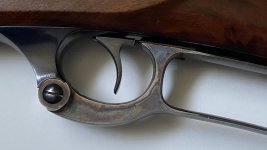 789CF0F6-9511-4E1C-A235-78F43902BDDD.jpg35.7 KB · Views: 189
789CF0F6-9511-4E1C-A235-78F43902BDDD.jpg35.7 KB · Views: 189 -
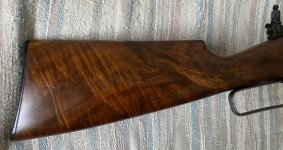 95C25AA1-5B4C-4B82-9994-6EC17FD4DECE.jpg76.2 KB · Views: 203
95C25AA1-5B4C-4B82-9994-6EC17FD4DECE.jpg76.2 KB · Views: 203 -
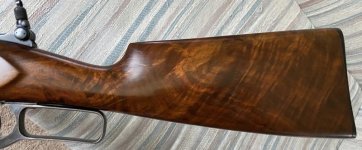 360BC481-FE3C-48E1-8E5F-2AB4B3CCF641.jpg49.8 KB · Views: 193
360BC481-FE3C-48E1-8E5F-2AB4B3CCF641.jpg49.8 KB · Views: 193 -
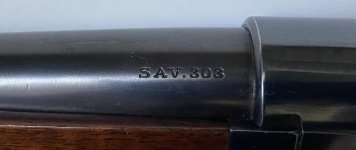 ECAB55C2-120A-4DF3-8DF3-76419C605A93.jpg26.1 KB · Views: 122
ECAB55C2-120A-4DF3-8DF3-76419C605A93.jpg26.1 KB · Views: 122 -
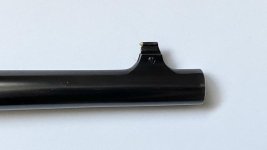 D628BB52-61BE-4FD8-B0CC-FE9084FC2E37.jpg19.2 KB · Views: 121
D628BB52-61BE-4FD8-B0CC-FE9084FC2E37.jpg19.2 KB · Views: 121 -
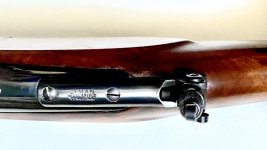 D2BAD74B-6AA6-44D7-9917-BC41898D7665.jpg42 KB · Views: 120
D2BAD74B-6AA6-44D7-9917-BC41898D7665.jpg42 KB · Views: 120 -
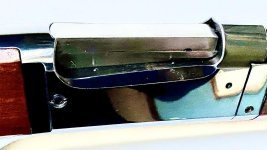 D2510B4B-2A28-4A77-A42A-EB4312E1237D.jpg57 KB · Views: 135
D2510B4B-2A28-4A77-A42A-EB4312E1237D.jpg57 KB · Views: 135 -
 A495CA45-A4FE-4ABB-9667-561313C554F3.jpg67.3 KB · Views: 119
A495CA45-A4FE-4ABB-9667-561313C554F3.jpg67.3 KB · Views: 119
Last edited by a moderator:




